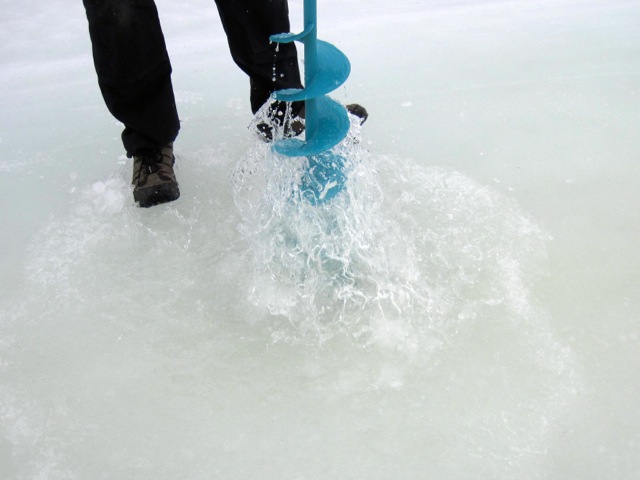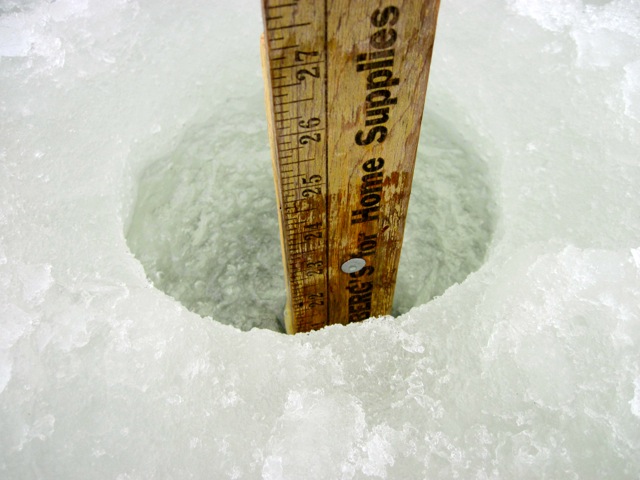The ice out at the end of last month signaled time to kick things into high gear at Tuscarora to prepare for the busy paddling season ahead. (If you were counting on your fingers, we were just one day shy of five full months of ice on Round Lake, since the lake froze over on November 26, 2015 last fall. Not a record by any stretch of the imagination, but not exactly the non-winter we were predicting in early December either.) Over the last few weeks, we’ve been putting docks in, deep cleaning cabins, pulling canoes out of their winter slumber lands (aka, the dining hall), training in staff, stocking the gift shop, and juggling all the other miscellaneous tasks that come with getting a canoe outfitters ready to roll for summer.
But we haven’t been keeping our noses so closely to the grindstone that we haven’t noticed the natural world slowly waking up around us.
Tuscarora is suddenly overrun with grouse and snowshoe hares. Hares haven’t fully switched out of their winter coats yet (and given the below freezing, windy, snowy fishing opener we had last weekend, neither have we!) and are running around with white “socks” on. The flower bulbs we planted last spring are blooming beside the outfitting building. The loon pair has returned to Round Lake and will hopefully start sitting on their nest soon. In the woods, you might stumble upon the early spring wildflowers of violets and wood anemones as the trees and scrubs continue to leaf out. Baby mammals (moose, wolves, fox, et. al) are taking their first tentative steps along forest paths. And in the full circle of life, the bugs – including some of the winged, biting kind – are making themselves known as well.

Andy snuck off yesterday with his buddy, Quinn, to do a day paddle up through Brant Lake towards Faye and Bingshick. They had such a good time catching up that they forgot to take much in the way of photos. No doubt, they were busy plotting ways to make the second annual Boundary Waters Canoe Expo – of which Quinn is the main mover and shaker – even better than last year’s. This photo of Quinn from yesterday does show that the weather has improved significantly since last weekend. We’ve been enjoying t-shirt weather with highs in the mid 60s.
The guys did a loop from Flying to Faye to Glee to Bingshick, back to Flying. It’s remote, rugged country, seldom traveled as many people with Brant Lake entry point permits often put their heads down and truck past this country on their way to Bat and Gillis. The Bingshick area really scorched in the Cavity Lake Fire of 2006, so the lake shores are covered with patches of waist-high to 10 ft. tall young jack pines, alder, and birch trees. Because the fire burned so hot through the dense Blowdown debris that covered the forest floor in 2006, the area is recovering at a slower rate than the forest affected by the much larger and destructive Ham Lake Fire that burned Gunflint Trail forest mostly outside of the Boundary Waters Canoe Area Wilderness in May 2007. You might remember from last spring that this area is also known for the elusive Arethusa Bulbosa Orchid.
The area Andy and Quinn paddled was filled with gullies and crags and Andy said it was easy to imagine that the topography they encountered was once underwater structure as part of a large lake that stretched up to Seagull Lake and beyond. Although renderings of the Great Lake Agassiz often don’t show the lake’s southeast shore reaching as far into the Minnesota Arrowhead region as we are, some geologists hypothesize that Agassiz certainly did cover much of today’s Boundary Waters Canoe Area Wilderness. It’s fascinating to watch the woods transition from season to season and even more interesting to think of the major transitions this land has gone through over the millennium to create this wilderness area.


































